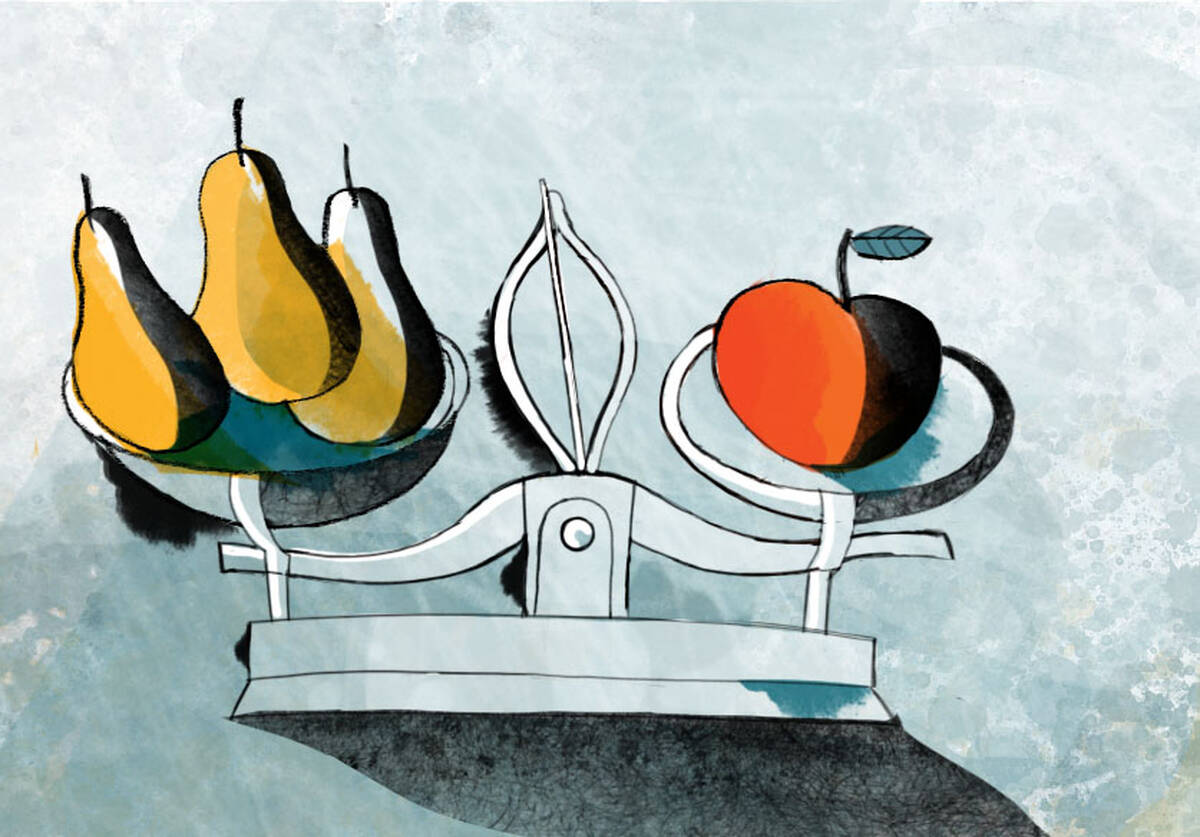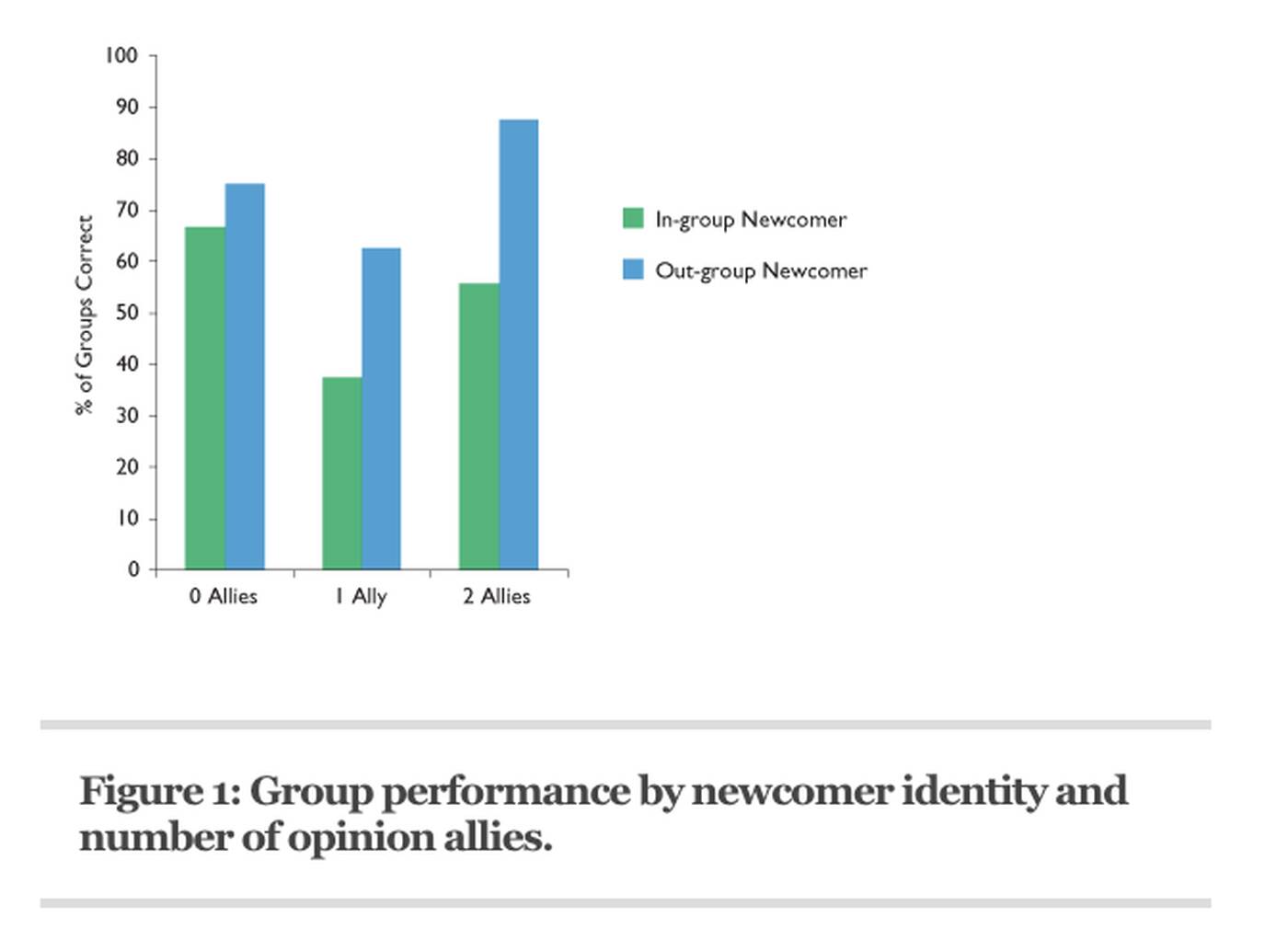Organizations Leadership Oct 1, 2010
Better Decisions Through Diversity
Heterogeneity can boost group performance.

Expanding diversity in the workplace is often seen as a good way to inject fresh ideas into an otherwise stagnant environment, and incorporating new perspectives can help members tackle problems from a number of different angles. But only a few have looked into exactly why or how this is so.
New research finds that socially different group members do more than simply introduce new viewpoints or approaches. In the study, diverse groups outperformed more homogeneous groups not because of an influx of new ideas, but because diversity triggered more careful information processing that is absent in homogeneous groups.
The mere presence of diversity in a group creates awkwardness, and the need to diffuse this tension leads to better group problem solving, says Katherine Phillips, an associate professor of management and organizations at the Kellogg School of Management. She and her coauthors, Katie A. Liljenquist, an assistant professor at Brigham Young University, and Margaret A. Neale, a professor at Stanford University, demonstrate that while homogenous groups feel more confident in their performance and group interactions, it is the diverse groups that are more successful in completing their tasks.
Diversity in the Workplace Can Produce New Ideas
Though people often feel more comfortable with others like themselves, homogeneity can hamper the exchange of different ideas and stifle the intellectual workout that stems from disagreements. “Generally speaking, people would prefer to spend time with others who agree with them rather than disagree with them,” Phillips explains. But this unbridled affirmation does not always produce the best results. “When you think about diversity, it often comes with more cognitive processing and more exchange of information and more perceptions of conflict,” Phillips says. In diverse settings, people tend to view conversations as a potential source of conflict that can breed negative emotions, and it is these emotions that can blind people to diversity’s upsides: new ideas can emerge, individuals can learn from one another, and they may discover the solution to a problem in the process. “It’s kind of surprising how difficult it is for people to actually see the benefit of the conversations they are having in a diverse setting,” observes Phillips.
“Generally speaking, people would prefer to spend time with others who agree with them rather than disagree with them.”
Phillips says the study is one of the first to look beyond the newcomer’s impact on a group and to focus instead on how the newcomer shifts alliances, thereby enlivening group interaction. “A lot of the research on newcomers has really specifically focused on the effect of newcomers as a source of new information,” Phillips says. “We know though that not all new ideas come from newcomers. Sometimes new ideas are sitting in the group already, just waiting for the right moment to come up.”
In their study, the researchers focus on whether the newcomer to the group agreed or disagreed with established group members, or “oldtimers” as Phillips refers to them. Sometimes a newcomer’s perspective aligned with one held by one or more of the current oldtimers (these agreeing oldtimers were called allies). By identifying allies, Phillips and her colleagues could determine if the benefits of having a newcomer only occurred when they brought in a new idea.
In the experiment, participants from fraternities and sororities were divided into fifty same-gender four-person groups. Each group performed the same task: read a set of interviews conducted by a detective investigating a murder. Participants decided on the most likely suspect individually before entering the groups to discuss his or her decision. In each four-person group, three individuals were always members of the same fraternity or sorority (the oldtimers) and the fourth individual (the newcomer) was either from that same fraternity or sorority (an “in-group”) or from a different one (an “out-group”).
After completing an unrelated task, the oldtimers were brought together and were given twenty minutes to come to a consensus on the most likely murder suspect. Five minutes into the discussion, a newcomer joined the group. Their task remained the same, but now they had to take the newcomer’s views into consideration. After the discussions were finished, each member rated their confidence in the group’s decision on the murder suspect, their feelings on how effective the group discussion went, how each person felt they fit into the group, and who they believed really committed the murder.
The Out-group Advantage
Unsurprisingly, oldtimers felt more comfortable with newcomers who belonged to their sorority or fraternity. But the biggest discovery was the sheer advantage an out-group newcomer gave a group—and this advantage was even more pronounced when the newcomer did not bring in a new idea. Diverse groups with out-group newcomers guessed the correct murder suspect with far greater frequency, while in-group newcomers hindered the groups’ accuracy (Figure 1). And though out-group newcomers increased group accuracy and performance, these groups reported much lower confidence in their decisions.

“When these diverse groups perform well, they don’t recognize their improved performance,” Phillips points out. “When people have visceral feelings and emotions,” she says, “it’s really hard to explain them away as “good” when they are feeling really bad.” Regardless of the outcome, a diverse group’s members will typically feel less confident about their progress largely due to the lack of homogeneity.
Homogeneous groups, on the other hand, were more confident in their decisions, even though they were more often wrong in their conclusions. In non-diverse groups, Phillips says, “often times the disagreements are just squelched so people don’t really talk about the issue. They come out of these groups really confident that everybody agreed when in fact not everybody agreed. There were new ideas and different opinions that never got discussed in the group.”
Phillips believes understanding the relationship between oldtimers who ally themselves with both in-group and out-group newcomers is important, because these relationships allow for disagreements to occur as well as newcomers’ opinions to be heard. “It is important to remember that these group members did not know each other for very long before identifying strongly with the group,” she says.
“When a newcomer comes in, it interrupts the group. It changes the flow of the process and makes people stop and pay attention to the person,” Phillips says. Whether they stop and pay attention to the newcomer is up to the group. But if they do, the pain will probably be worth the gain.
Phillips, Katherine W., Katie A. Liljenquist and Margaret A. Neale. 2009. Is the pain worth the gain? The advantages and liabilities of agreeing with socially distinct newcomers. Personality and Social Psychology Bulletin 35: 336-350.
